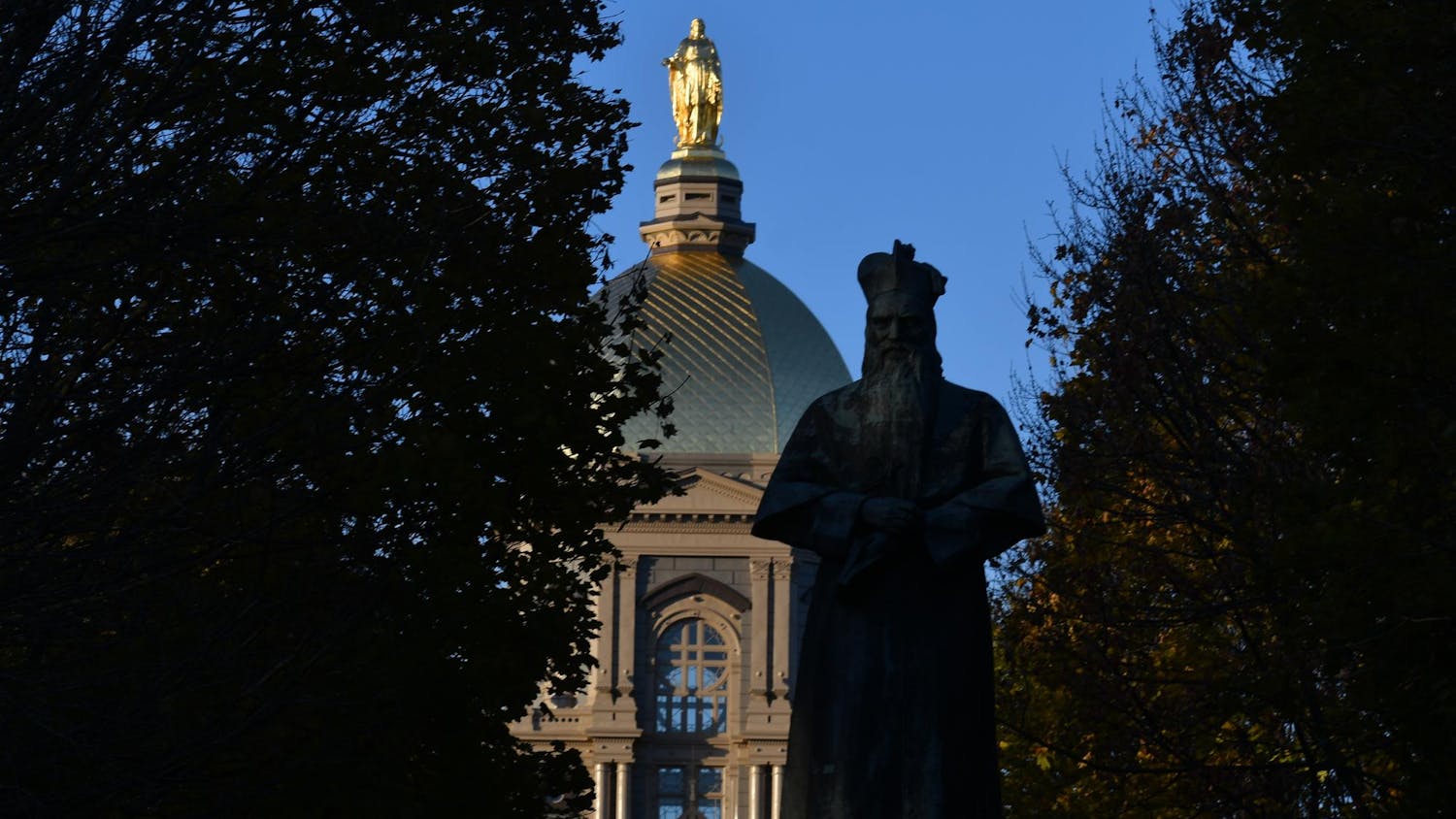The Student Policy Network (SPN) hosted an interactive reentry simulation Saturday morning where students learned about the barriers to reentering society after being incarcerated in the state of Indiana.
SPN connects students and community partners for public policy research and advocacy. The reentry simulation was hosted in partnership with Life Outside Reentry Assistance, a South Bend-based organization serving the formerly incarcerated.
Grace Hsu, a junior studying economics and pre-health, said the project and reentry simulation have been “eye-opening.” Hsu and sophomore Vanshika Dixit are co-leaders for the Life Outside project.
“I feel like a lot of people focus on mass incarceration, but don't really think about what comes after that,” Hsu said.
Hsu and Dixit worked with Justin McDevitt, co-founder of Life Outside Reentry Assistance and former rector of Stanford Hall, to plan the simulation. McDevitt also directs the Women’s College Partnership (WCP), a college-in-prison program at Indiana Women’s Prison, within the Center for Social Concerns (CSC).
Life Outside has hosted two reentry simulations in the last six months at the South Bend public library. The SPN project was extended from a research-focused project in the fall to organize a reentry simulation, though on a “smaller scale” than those at the public library, Hsu said.
During the simulation, each student participant was given a “life card” with a predetermined amount of money and identification status. For example, some students were assigned $200 and a social security card, while others had only $100 and no ID.
The students moved from station to station to complete a weekly set of tasks, such as paying rent, paying for food or getting an ID. The stations included a medical center, counseling and treatment, GED and career center, a bank, an ID station and more.
“A lot of people wanted to go to jail on purpose because that was almost easier than having to complete all these tasks,” Hsu said.
The simulation ran in four rounds of ten minutes, with ten minutes representing a week and the entire simulation representing a month of reentering society after incarceration.
“What was interesting to me is seeing Notre Dame students be confused and get frustrated because that’s exactly how it is for people coming out of prison,” McDevitt said. “There’s never enough time, there’s never enough money. And that’s sort of the point to help students understand that.”
In addition to planning the simulation, the SPN group researched and presented on Indiana-specific barriers to reentry. They focused on three categories of barriers: housing, mental health and education.
Hsu said that though reentry is important broadly as an issue that impacts the community, it’s especially key for Notre Dame students interested in goverment and policy to understand the barriers to reentry.
“Having the awareness of this issue is really important for future lawmakers and policy makers to not be discriminatory or inequitable in our law making and decisions,” Hsu said.
The SPN project is not Notre Dame’s only research into the effects of mass incarceration, or life after incarceration. The CSC oversees the Notre Dame Programs for Education in Prison (NDPEP) — which houses the WCP and other programs — to provide “high-quality, credit-bearing college courses that lead to undergraduate liberal arts degrees in the state prison environment.”
This research helps Notre Dame understand the “vast system” of incarceration, McDevitt said.
“Understanding the system that’s broken helps us both try to change it, and in the meantime, work to help people as they continue to be inside of a broken system,” McDevitt said.
In addition to the student participants, community leaders Cheryl Ashe and Jeff Walker attended the reentry simulation.
Walker cofounded Life Outside Reentry Assistance with McDevitt and currently serves as the executive director of the Beacon resource center, a multipurpose community space in a renovated bowling alley.
Ashe is a community organizer and regular volunteer at Dismas House, a local nonprofit that provides transitional housing for recently incarcerated individuals. She’s known in the community for her commitment to helping those coming out of prison, McDevitt said.
“Anything that we could do to bridge the [Notre Dame – South Bend divide] helps both the University and the community,” McDevitt said. “So having leaders in the community who do this with their life come onto Notre Dame’s campus and set an example for students and inspire students with the work that they do helps us.”
Hsu said that she hopes to return with a larger reentry simulation next year with more student participants.
McDevitt added that he would love to ask a formerly incarcerated person to come and speak at future iterations of the simulation.
“There’s a lot of education that happens outside of the classroom, and this is one of those moments,” McDevitt said. “The more we know about how other people survive and live, the more we can live in the world in a way that matters.”
Read More
Trending









